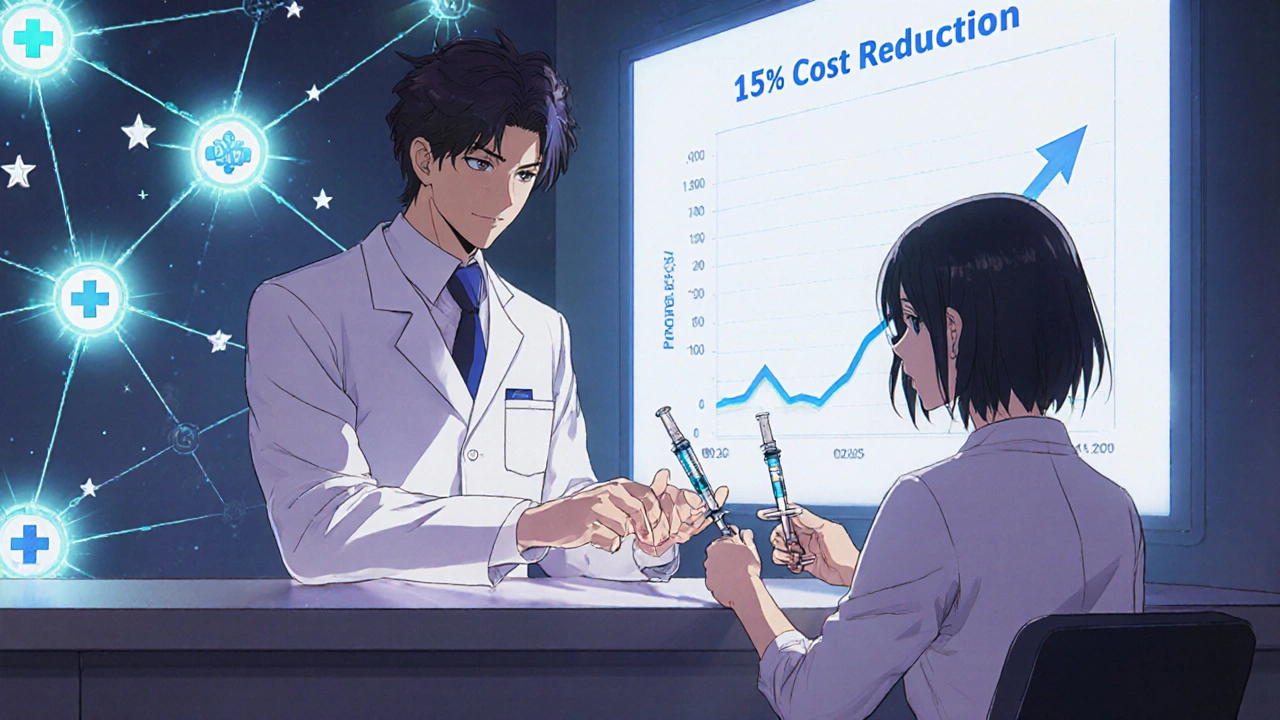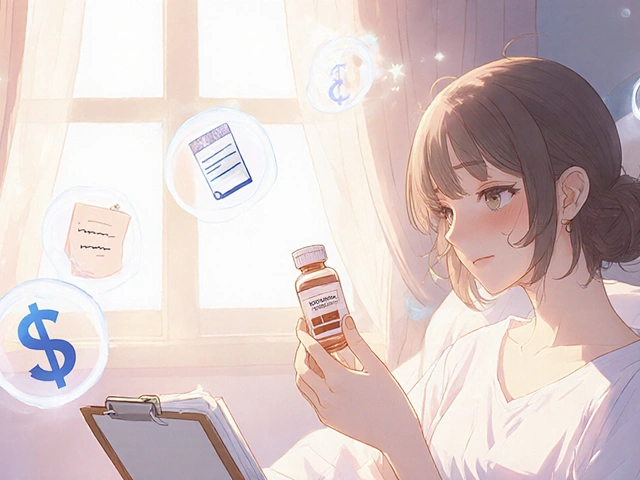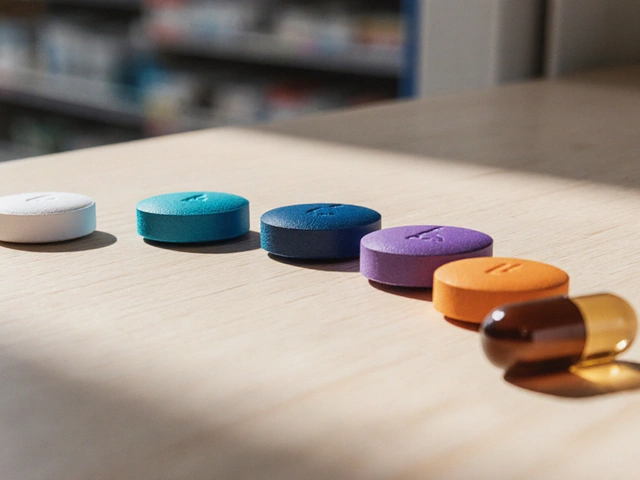Specialty medications and injectables are changing how we treat chronic diseases - but they’re also breaking budgets. These drugs, used for conditions like cancer, rheumatoid arthritis, multiple sclerosis, and hepatitis C, make up just 2% of all prescriptions but account for half of all pharmacy spending. In 2023, the average employer paid $34.50 per member per month just for these drugs. And that number is still rising, with spending projected to hit $350 billion by 2027. If you’re managing benefits for employees, paying for care yourself, or helping someone navigate this system, you need practical ways to cut costs without sacrificing outcomes.
Start with Formulary Management
Formulary management isn’t just a buzzword - it’s a proven tool to stop unnecessary spending. This means using clinical rules to control which drugs are covered and how they’re used. Prior authorization, step therapy, and quantity limits are the main levers. For example, Excellus BlueCross BlueShield saved $13.64 per member per month just by requiring prior authorization for GLP-1 weight loss drugs. That’s over $160 a year per person, just from one drug class.These rules don’t block access - they ensure the right drug is used at the right time. A patient with rheumatoid arthritis might start with a less expensive oral medication before moving to an injectable biologic. If the first drug works, there’s no need to jump to a $10,000-a-month therapy. The key is having a Pharmacy and Therapeutics (P&T) committee made up of pharmacists and clinicians who review data regularly and adjust rules based on real-world results.
Use Narrow Pharmacy Networks
Not all pharmacies are created equal when it comes to specialty drugs. Many employers and insurers are moving to narrow networks - working with just a few specialty pharmacies that offer lower prices and better support. CarelonRx found that limiting networks to preferred providers cuts costs by 10-15%. Why? These pharmacies negotiate better rates because they handle high volumes. They also offer clinical support: nurses who call patients to check on side effects, delivery of cold-chain medications, and 24/7 access to pharmacists.One employer saw $1.37 in savings per member per month - or $35 million annually across 200 companies - just by switching to a preferred network. The catch? Some patients resist changing pharmacies. About 22% of employers reported a spike in customer service calls during the transition. The fix? Communicate early. Send clear letters, offer help setting up new accounts, and make sure the new pharmacy can handle refills and delivery without delays.
Switch to Biosimilars When Possible
Biosimilars are the equivalent of generic drugs for biologics - complex, protein-based medications made from living cells. They’re not exact copies, but they work the same way and are proven safe and effective. The FDA has approved 42 biosimilars as of October 2023, and they cost about 50% less than the original biologic drugs.For example, a biosimilar to adalimumab (Humira) can save $6,000-$8,000 per year per patient. Hospitals that switched to biosimilars saw 20-30% cost reductions with no drop in patient outcomes. The problem? Many doctors still prescribe the brand name out of habit. Patients may be hesitant, too, worried that a cheaper version isn’t as good.
Here’s how to overcome that: educate providers with data. Share real-world outcomes from other clinics. Offer free samples of biosimilars so doctors can try them. And talk to patients - explain that biosimilars are approved under the same strict standards as the original. The FDA requires them to show no clinically meaningful differences in safety or effectiveness.

Move Injectables Out of Hospitals
Many specialty injectables - like those for multiple sclerosis or Crohn’s disease - are given in hospital outpatient departments. But they don’t need to be. In fact, 63% of specialty drug costs come from drugs that can be safely administered in a doctor’s office, infusion center, or even at home.Quantum Health found that shifting these treatments out of hospitals cut costs by 48% on average. Why? Hospital outpatient departments charge much more for the same service. A single infusion that costs $1,200 in a clinic might cost $3,500 in a hospital. That’s not because the drug is more expensive - it’s because of how the facility is paid.
Transitioning requires coordination. Your provider needs to be trained in home administration. The pharmacy needs to ship the drug with proper storage. Insurance needs to cover home infusion services. But once it’s set up, patients get more comfort, fewer trips, and lower bills. One program saw 91% of eligible cases successfully moved to lower-cost settings - with no increase in complications.
Maximize Financial Assistance Programs
Many drug manufacturers offer copay assistance programs - coupons that reduce your out-of-pocket cost to $0. But here’s the trick: if your plan counts those coupons toward your deductible, you’re still paying more over time. That’s because once you hit your deductible, your insurance pays more - but the manufacturer’s coupon doesn’t help you get there any faster.Some plans now use copay maximizers. These programs let the manufacturer’s coupon cover your entire copay, and the plan doesn’t count it toward your deductible. That means you pay $0 out of pocket right away - and your plan still saves money because the manufacturer absorbs the cost. CarelonRx found this approach can reduce employer spending by 5-8% annually.
Not all plans offer this. Ask your benefits administrator: “Do you use copay maximizers for specialty drugs?” If not, push for it. It’s a win-win: patients pay less upfront, and the plan spends less overall.
Push for Value-Based Contracts
Traditional drug pricing pays for the drug no matter if it works. Value-based contracts change that. They tie payment to results. For example, a manufacturer might agree to refund part of the cost if a patient doesn’t respond to the drug after 3 months.Prime Therapeutics reported a 45% year-over-year increase in these types of contracts in 2023. Companies like CVS Health and Express Scripts are now offering them for cancer drugs, multiple sclerosis treatments, and rare disease therapies. These contracts are still rare - but they’re growing fast.
How to get one? If you’re part of a large employer group or health plan, ask your pharmacy benefit manager (PBM) if they have value-based agreements for any of the high-cost drugs you’re using. Even if they don’t now, asking can open the door. Some manufacturers are eager to sign these deals because they prove their drugs work.

Watch for Policy Changes
The Inflation Reduction Act gave Medicare the power to negotiate prices for some high-cost drugs. While this doesn’t directly affect private plans yet, it’s changing the market. Experts believe private insurers will soon be pressured to adopt similar rules. In August 2023, CMS announced a pilot to group originator biologics and biosimilars under the same Medicare reimbursement code - a move experts called the most feasible and impactful policy change possible.This means hospitals and clinics will get paid the same amount whether they give the brand-name drug or the biosimilar. That removes the financial incentive to choose the more expensive option. If this works in Medicare, it will spread to private insurance - making biosimilars even more attractive.
Combine Strategies for Maximum Impact
No single fix solves everything. The most successful programs use at least three of these strategies together. For example: use a narrow pharmacy network to get better pricing, require prior authorization to prevent overuse, and push for biosimilar switches where possible. One employer group cut specialty drug spending growth from 11% to 6% annually by combining all five tactics.Implementation takes time - 6 to 9 months to set up networks, train staff, and educate patients. But the ROI is clear. Most programs pay for themselves within 12 to 18 months. And the long-term savings? Experts project that coordinated efforts could save employers $45-60 billion by 2027.
What You Can Do Right Now
If you’re paying for these drugs yourself:- Ask your doctor: “Is there a biosimilar version?”
- Ask your pharmacy: “Can this be given at home or in an office instead of a hospital?”
- Check if your drug manufacturer offers a copay card - and ask your insurer if they use a maximizer.
If you manage benefits:
- Review your formulary - are you using step therapy for high-cost drugs?
- Ask your PBM: “Do we have a narrow specialty pharmacy network?”
- Push for value-based contracts on top 5 most expensive drugs.
- Track spending monthly - if specialty drug costs are rising faster than 5%, it’s time to act.
Specialty medications aren’t going away. But their costs don’t have to keep rising. With smart choices, better contracts, and smarter use of alternatives, you can take back control - and save thousands without giving up care.
Are biosimilars safe to use instead of brand-name biologics?
Yes. Biosimilars are approved by the FDA after rigorous testing to prove they work the same way as the original biologic drug. They must show no clinically meaningful differences in safety, purity, or potency. Thousands of patients have used biosimilars for years with the same outcomes as the brand-name versions. The FDA requires ongoing monitoring, and real-world data continues to support their safety.
Why are specialty drugs so expensive?
Specialty drugs are expensive because they’re complex to develop, require special manufacturing, and treat rare or chronic conditions with small patient populations. Companies often set high prices to recoup R&D costs and generate profit. Many are biologics - made from living cells - which cost far more to produce than traditional pills. Marketing, patent protections, and limited competition also keep prices high.
Can I switch from a hospital infusion center to home infusion?
In most cases, yes - if your doctor approves it and your insurance covers it. Many injectables like those for MS, Crohn’s, or immune disorders can be safely administered at home. Home infusion services include delivery of the drug, training on how to give it, and nurse follow-up. It’s often cheaper and more convenient. Talk to your care team and check with your insurer about coverage.
What’s the difference between a copay card and a copay maximizer?
A copay card reduces your out-of-pocket cost for a drug, but if your plan counts that payment toward your deductible, you’re still working toward a higher deductible. A copay maximizer lets the manufacturer’s coupon cover your entire copay without counting it toward your deductible. This means you pay $0 right away, and your insurance pays more later - which lowers your total spending over time. Not all plans offer maximizers - ask your benefits manager.
How do I know if my employer is using cost-saving strategies for specialty drugs?
Check your benefits summary or ask your HR department: Do you have a narrow specialty pharmacy network? Do you use prior authorization or step therapy for high-cost drugs? Do you offer biosimilar options? Are copay maximizers available? If you’re not sure, request a copy of your plan’s specialty drug management policy. Most large employers now use at least three of these strategies.
Specialty drugs are a growing challenge - but not an unsolvable one. The tools are here. The data is clear. What’s needed now is action - from patients, providers, and payers alike.







Ancel Fortuin
November 18, 2025 AT 17:26Hannah Blower
November 19, 2025 AT 20:50Gregory Gonzalez
November 21, 2025 AT 02:47Ronald Stenger
November 23, 2025 AT 01:21Samkelo Bodwana
November 25, 2025 AT 00:07Jeff Hakojarvi
November 26, 2025 AT 19:17Timothy Uchechukwu
November 28, 2025 AT 11:57Emily Entwistle
November 30, 2025 AT 01:17Duncan Prowel
December 2, 2025 AT 00:23Bruce Bain
December 2, 2025 AT 06:54Jonathan Gabriel
December 2, 2025 AT 22:07